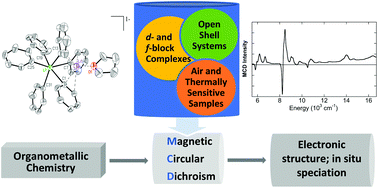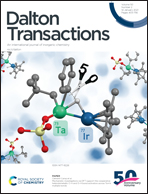C-Term magnetic circular dichroism (MCD) spectroscopy in paramagnetic transition metal and f-element organometallic chemistry
Abstract
Magnetic circular dichroism (MCD) spectroscopy is a powerful experiment used to probe the electronic structure and bonding in paramagnetic metal-based complexes. While C-term MCD spectroscopy has been utilized in many areas of chemistry, it has been underutilized in studying paramagnetic organometallic transition metal and f-element complexes. From the analysis of isolated organometallic complexes to the study of in situ generated species, MCD can provide information regarding ligand interactions, oxidation and spin state, and geometry and coordination environment of paramagnetic species. The pratical aspects of this technique, such as air-free sample preparation and cryogenic experimental temperatures, allow for the study of highly unstable species, something that is often difficult with other spectroscopic techniques. This perspective highlights MCD studies of both transition metal and f-element organometallic complexes, including in situ generated reactive intermediates, to demonstrate the utility of this technique in probing electronic structure, bonding and mechanism in paramagnetic organometallic chemistry.

- This article is part of the themed collection: 2020 Frontier and Perspective articles


 Please wait while we load your content...
Please wait while we load your content...